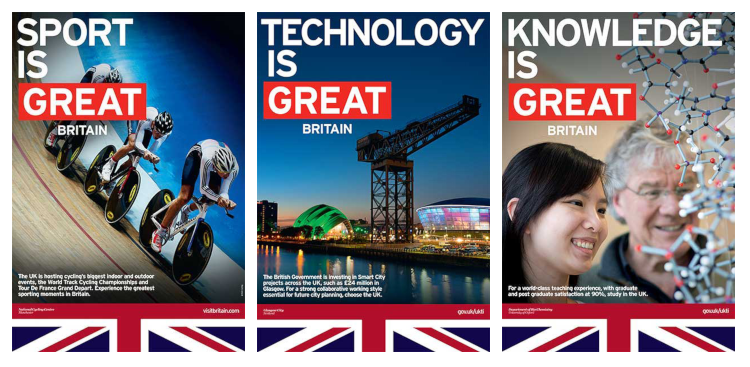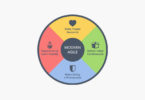Thinking about marketing communications you will probably visualise actions such as sales, public relations, pricing, packaging and distribution which aim to place a product or service with a customer. And you will probably tend to associate this to six-figures companies operating in the private sector, nothing to do with the public government.
Despite the differences between the two sectors cannot be denied, if you think the above you are way off base because day by day the two are converging in many ways, especially towards the emerging trend of a customer-centric approach.
An advisory quote by the famous USA marketer and salesman might help digging deeper into the topic:
Stop selling. Start helping. – Zig Ziglar
Helping is becoming crucial in marketing, and customer expectations are raising both in relation to the product and the communication around it. In any sector, a product or service that wants to win the competition must be useful and helpful, which means marketing is most than ever in charge of supporting customers in their journey and making them able to improve their lives.
Technology trends are pushing the boundaries challenging, even more, the public agencies to adapt to an unprecedented rise in citizen expectations creating extraordinary demands on government communicators.
In this context, while being informative and supportive to citizens has always been a duty of public governments, now the latter are expected to understand the citizen as a customer and encourage changes to society that will benefit society. A challenge that is made more and more difficult by the fact that at the same time government operations are changing.
Government leaders are called to demonstrate their commitment to customer service and progressive technology as taxpayers are comparing their customer service experiences with local government to the more positive experiences with private businesses.
Below a short video abstract of a webinar by the agency ViewPoint, specialised in government software and communication, explaining why a customer-centric approach is key to build a successful marketing and communication strategy with citizens. One of the video highlight is that nowadays public sector “monopoly” on services is an illusion.
6 Public Sector Marketing Best Practices and Trends
What are the countries already following the customer-centric approach and leading the digital marketing scenario in the public government? UK Government is internationally recognised as pioneers in effective public sector communications and most of the best practices and trends listed below are inspired by the GCS (Government Communication Service) standards. Also the Canadian and the USA contexts have been a great source of inspiration.
1. Research and Understand User Needs to Build Personalised, Citizen-Centric Communications
Following the general trend described above valid both in the public and private sector, the communication experience of the citizens should be oriented to the needs of the audience members, as opposed to the organisation. Services are designed around citizens’ needs, deeply understood through research and considering feedback crucial for services improvements.
2. Restore Trust and Focus on the Community
Strictly connected to the point above, featuring citizens/customers looking for personalised interactions, it becomes crucial for the public sector marketeers to focus on dialogue and engagement. Honest and open communication is the key element to restore public trust and build a conversation able to involve citizens with the service they use, keeping always in mind that among citizens there are different groups of stakeholders.
3. Develop a Strong Identity, Meaning, and Transparency Leveraging Innovation
Good communication starts from a strategy with a purpose, solidly connected to a strong identity and a clear message. This is the starting point of information made available publicly in the interest of transparency. Digital technologies can support this process starting from the design steps of the services. At the same time, meaningful and engaging campaigns should be committed to leveraging innovation and behavioural change.
4. Use Simple and Effective Content, Able to Tell a Story
Content strategy is key to allow citizens to access information and services. Department based websites must be replaced by relevant content based on well identified needs (identified through the user-centered approach mentioned above). The goal is to accompany citizens through public services without forcing them into government logics, but rather telling them a story, their own story.
5. Build an Effective and Iterative Data-Driven Marketing Strategy
Given the pressing need to justify marketing spend the practice of relying on data is key to focus on priorities, delivery and results. The goal of this best practice should be to build a cycle guided by activities such as collecting performance data, using evaluation tools, identifying KPIs, iterate and improve services and their communications frequently.
Here it is also crucial to be aware that the ROI of government deliverables are social, financial and environmental good, but also that marketing in the public sector can generate profits being able to balance the budget and increase actual revenue. For example, social change programs that promote health or safety will result in statewide savings, as well as branding a municipality or a country (see The UK case study below) increases tourists with money spent at local businesses.
6. Build Multi-Disciplinary and Agile Teams, Strengthening Internal Communications
Given the complexity of the technological and social context in which government operates nowadays a multidisciplinary and agile marketing team is needed to design, build and operate successful and engaging services. But marketing should not be referred just to its department, it should rather be a company-wide initiative in which the entire company is involved because all employees are brand ambassadors and communicate to others values and organisation’s culture.
How much do you see in these best practices trends that are affecting also the private sector? I do a lot. Of course, the evolution speed of them is slower in the public sector but still, there are a lot of similarities.
Getting Inspired by The UK Government – a few case studies
As mentioned already, most of the best practices discussed above come from the GCS UK government agency. But there are also other British public agencies that recently shared very inspiring marketing campaigns.
The NHS (National Health Service) currently lead by Phil Bastable, a marketer specialised in the public sector, has two creative and effective campaigns worth mentioning, both culminating in a really empathic video. One is Missing type NHS UK aiming to promote blood donations, and the other one is the NHS nursery recruiting campaign.
NHS England is worth a further mention for two quotes by its head of marketing. One is about the pressing need to have metrics and measure performances also in the public sector:
Every penny that is spent on marketing is a penny being taken away from front-line services, so we have to justify everything we do. We must demonstrate there’s a real ROI for every campaign we produce in regard to the health of patients. It’s a key discipline for marketers to have the ability to develop a robust evaluating plan and understand how to gather metrics and make smart objectives. – Phil Bastable
The other one is about motivation that lies behind creating government marketing campaigns that work and simplify citizens’ lives, an unmissable point when dealing with social innovation:
The most rewarding part is delivering campaigns that can really benefit people or giving people a service that could really help them with any problems they’ve encountered. We try to simplify the process and use marketing skills to make it as easy as possible for people on their consumer journey. – Phil Bastable
Another Made in The UK campaign that really worked and still works is the Great Britain Campaign (video showed here above and also a few posters showed in the featured image). The campaign is a cross-Government initiative designed to showcases the best of what the whole nation has to offer aiming to inspire the world and encourage people to visit, do business, invest and study in The UK. The campaign represents one of the most ambitious Government campaigns ever, uniting the efforts of the public and private sector to generate jobs and growth. Data show that the campaign secured confirmed economic returns of £3.9bn for the UK.
What do you think about these best practices? Do you think there are more to be added? Do you have any other campaign representing government marketing efforts in the 21st Century? Let me know in the comments below.
Learn more:
- Viewpoint, Building a Customer-Centric Approach to Service Delivery [webinar] – February 21, 2017
- Results Map, 8 Best Practices in Government Communications – August 9, 2017
- Gov.uk – Digital Service Standard
- Careers in Government, 5 Reasons Why the Public Sector Needs Marketing – Jan 9, 2016
- Campaign, A new century of public sector marketing is dawning: here’s what to expect – January 10, 2018
- Marketing Week, NHS England on why public sector marketing isn’t the private sector’s ‘poor cousin’ – August 28, 2018








Leave a Comment